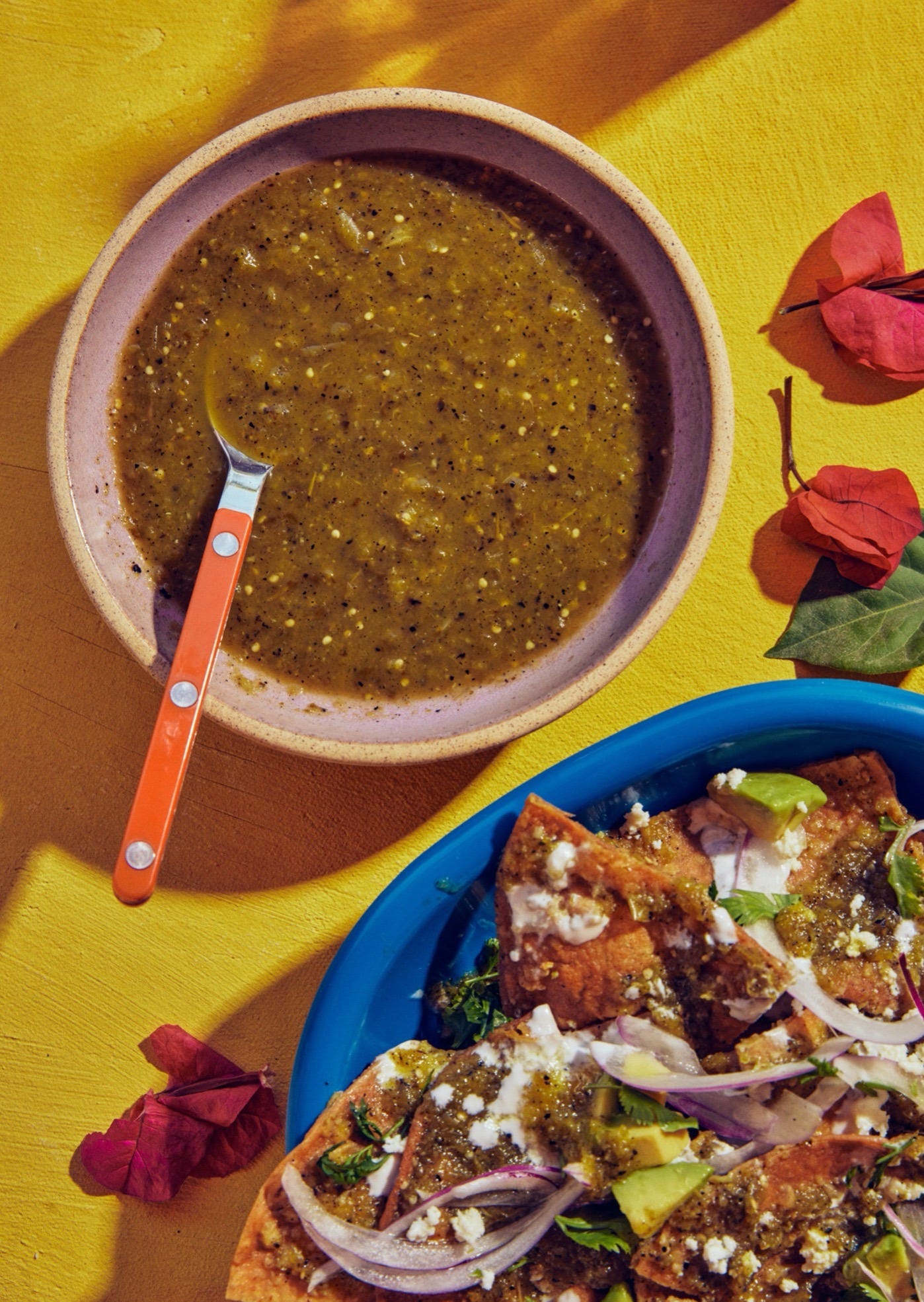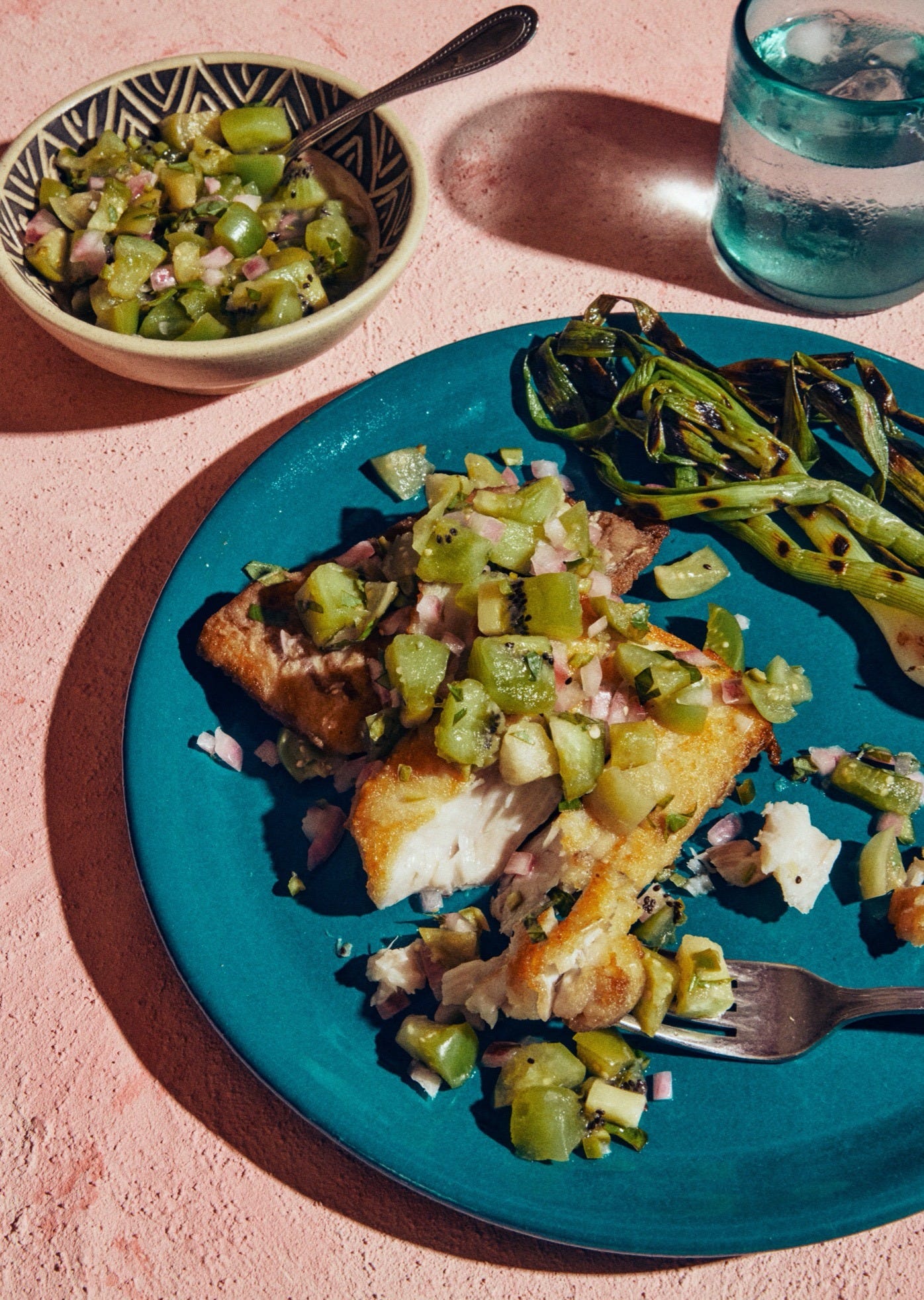Salsa School: Salsa Verde - Part 3
Remixing with Confidence (a.k.a. Making It Yours)
Salsa Verde: A Whole Category, Not Just Tomatillo + Jalapeño
Part 3: Remixing with Confidence (a.k.a. Making It Yours)
TL;DR: What This Post Covers
By now you know salsa verde isn’t a recipe, it’s a mood. You’ve seen the methods, cooked a few versions, and maybe started to feel how it works. Now comes the fun part: making it your own. This is where you taste, adjust, and riff until you build your house salsa—the one that always works, always fits, and always tastes the way you want it.
If you missed Part 1 & Part 2, scroll down for the links so you can catch up.
Start with What You’ve Got
Salsa verde isn’t precious. It’s practical. Open your fridge. What’s green? What’s alive? What needs using up? A stray tomatillo, a wilted handful of herbs or salad greens, a roasted poblano from last night—those are the beginnings of something. In a Mexican kitchen, salsa grows from what’s available. That’s not cutting corners, that’s craft.
Build a Base That Feels Right
Tomatillos are the classic—bright, tart, forgiving—but they’re not the only way.
Cucumber = cool and clean
Roasted poblano = sweet and smoky
Spinach or lettuce = body and color
Nopales or green mango = texture and funk
Green apple or plum = tartness and fruit
No wrong answers. Pick what matches your dish, your mood, or your moment.
Choose the Chile Like You Mean It
The chile is the heartbeat. Don’t be shy—this is Salsa Daddy salsa.
Serrano wakes you up
Jalapeño rounds things out
Poblano brings soft sweetness
Habanero or chiltepín bring the fire
Think flavor, not just heat. Raw for sharpness. Roasted for caramel. Charred for smokey. Mix fresh with dried for depth. Layer them until it tastes alive.
Balance the Conversation
Every salsa needs harmony. Here’s how I think about it:
Salt wakes it up
Acid (lime, vinegar, tomatillo) sharpens the focus
Fat (avocado, oil, seeds, crema) smooths it out and cuts the heat
Heat makes it a salsa, otherwise its ketchup
Texture gives it personality
A tiny amount of sugar (or fruit) can round out the harsh edges, reduce acid and bitterness
Taste. Adjust. Taste again. That’s the work.
Match the Salsa to the Moment
Not every verde works everywhere. Match the mood:
Seafood or ceviche → raw, bright, cucumber + lime + serrano
Eggs or chilaquiles → boiled tomatillo + garlic + chile de árbol
Tacos or grilled meat → tatemada, smoky, molcajeteada
Fried foods → smooth, tart, but clingy so it holds onto the food
Rice, beans, grain bowls → thinner but tangy, with avocado, crema, or oil
Find Your House Salsa Verde
Eventually, one will stick. You’ll make it without looking. You’ll keep the ingredients on hand. You’ll serve it without thinking twice—and people will ask for the recipe. That’s your house salsa.
Mine? Charred tomatillo, onion, serrano, jalapeño, and garlic, plus lime and cilantro. Blended, pulsed not pureed. Bright, spicy, a little smoky. Fits my mood. Yours might have avocado, nopales, or three different chiles. If it tastes like you, it’s the right one.
Missed a Post?
Part 1: What is Salsa Verde
Part 2: Three Recipes to Teach You the Techniques to Build Your Own
Salsa School: Salsa Roja
Want to keep going? Subscribe to Sazón for weekly Salsa School lessons, recipes, and stories straight from my kitchen.
And if you want even more, grab Salsa Daddy—packed with dozens of salsas built on flavor, remixing, and freedom.
💬 What’s your house salsa verde? Drop your go-to combo in the comments.






